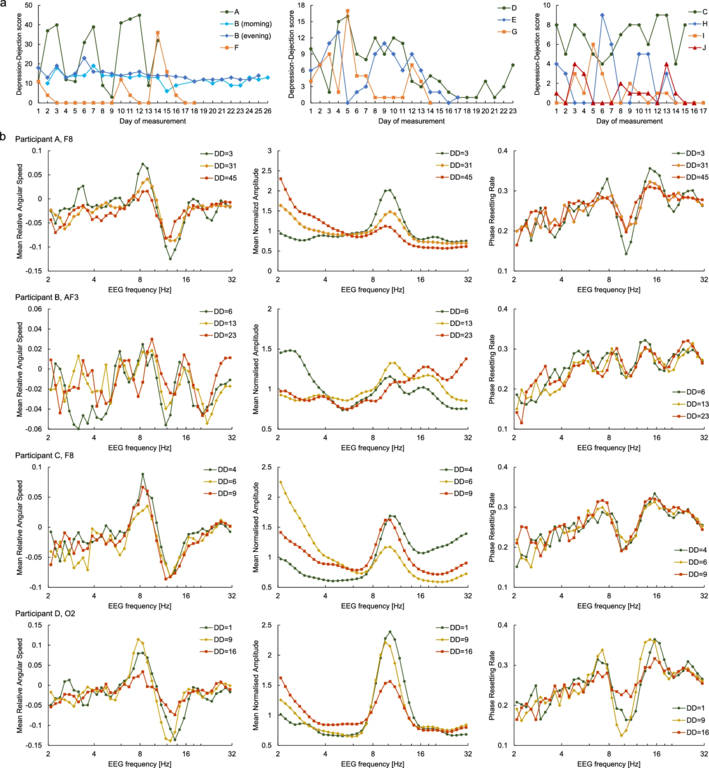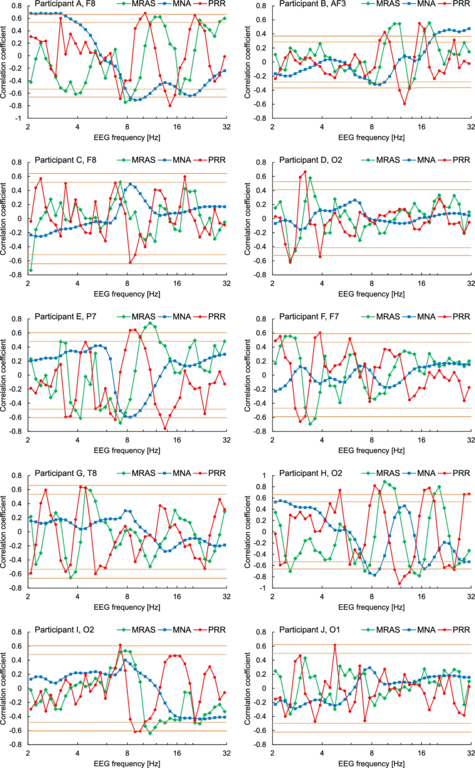・This study aimed to show that some EEG activities are reflective of a depressed mood and to use this finding to develop practical biomarkers for early depression detection.
・As a first step, we conducted a pilot study to investigate the generality of the preliminary results, mainly in healthy participants. We found that indicators of depressed mood were correlated with the occurrence frequency of EEG phase resetting.
・The results may contribute to a better understanding and treatment of depression.
Abstract
We reanalysed data from a previous study that analysed electroencephalogram (EEG) of healthy participants with high and low indicators of depressive tendencies and found that the occurrence frequency of phase resetting was strongly correlated with the degree of depressed mood that day. We conducted a pilot study to investigate the generality of the above preliminary results, mainly in healthy participants. Some brainwave activities involving phase resetting which reflect the depressed mood at the time can be easily monitored by measuring the resting EEG with eyes closed for 1 min with a few electrodes. We instructed 10 participants (nine healthy and one diagnosed with depression, aged 18–34) to record their EEG for 14–26 days. One measurement consisted of answering the Profile of Mood States 2nd edition (POMS-2) and recording EEG. The POMS-2 is a self-report questionnaire that assesses seven states: Anger–Hostility, Confusion–Bewilderment, Depression–Dejection, Fatigue–Inertia, Tension–Anxiety, Vigour–Activity, and Friendliness. We found that indicators of depressed mood were correlated with the occurrence frequency of EEG phase resetting. For most participants, the correlation coefficients swung systematically between large positive and large negative values with respect to EEG frequency; however, the frequencies at which they were maximum or minimum differed among participants.
Benefit
We demonstrate that changes in depressive mood can be objectively measured by measuring brain waves for one minute while a person is resting and eyes closed. We counted the number of occurrences of phase resetting and calculated the frequency per cycle, which we call the phase resetting rate (PRR), and this is our original analysis. PRR is currently the only candidate that can estimate changes in depressed mood in individuals who are not yet diagnosed as being depressed, which seems essential for early detection of depression, and appears more promising than other candidates that can only discriminate EEG between patients with depression and healthy controls.
Market Application
The elucidation of depression mechanisms and the improvement and development of treatments for depression.
Publications
https://www.nature.com/articles/s41598-023-40582-y
Other
New study links brainwave patterns to depressed mood shifts (psypost.org)
https://neurosciencenews.com/depression-eeg-23928/


